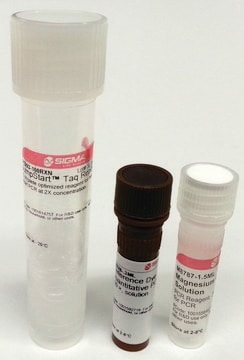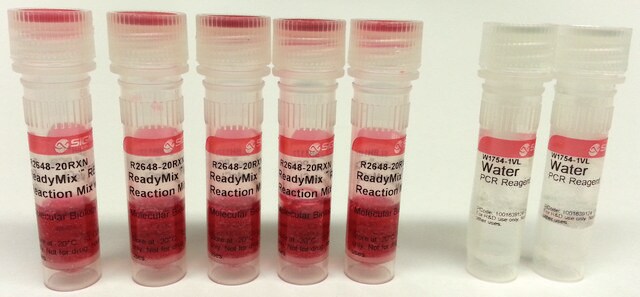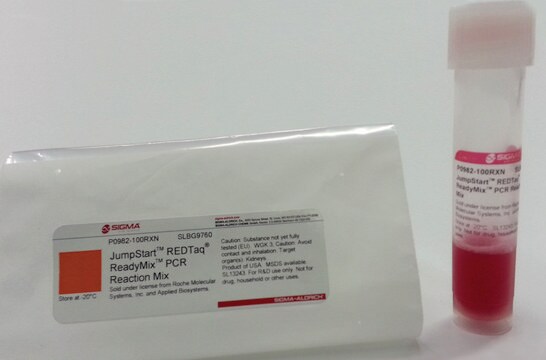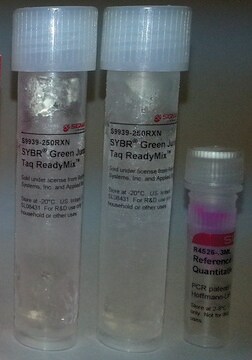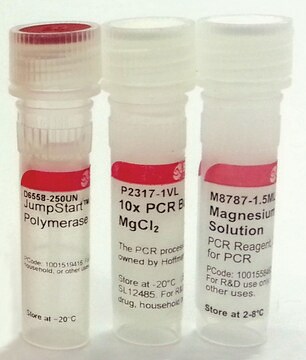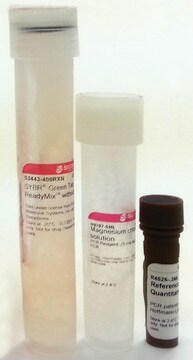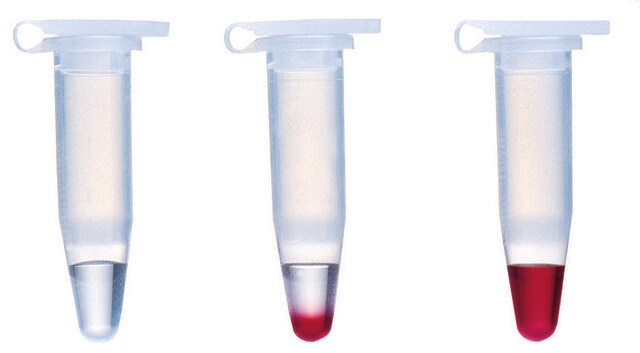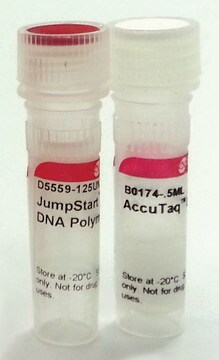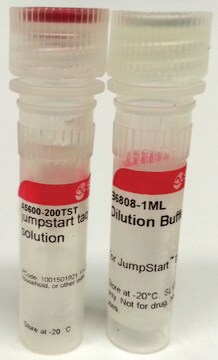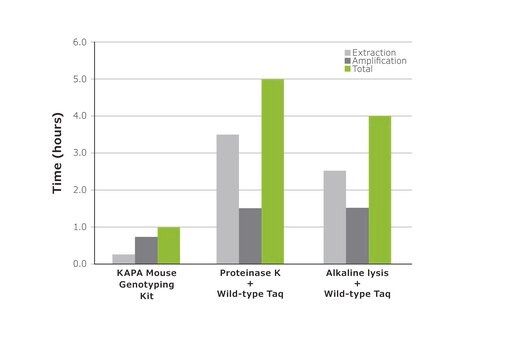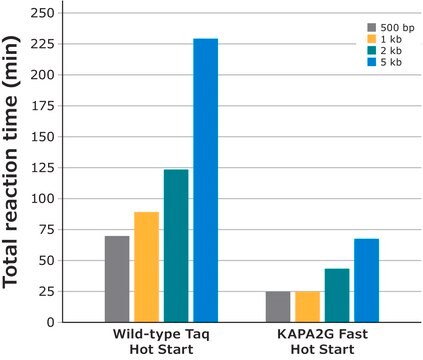Kluczowe dokumenty
P2893
JumpStart™ Taq ReadyMix™
Complete optimized reagent for hot-start PCR at 2X concentration
Synonim(y):
hot start PCR master mix, hot start master mix, hot start taq master mix, mutiplex PCR
About This Item
Polecane produkty
Poziom jakości
Postać
liquid
zastosowanie
sufficient for 100 reactions
sufficient for 400 reactions
Właściwości
Multiplex PCR
dNTPs included
hotstart
stężenie
2.5 units/reaction (50 μL reaction volume)
metody
PCR: suitable
kolor
colorless
przydatność
suitable for (quantitative PCR)
Zastosowanie
agriculture
Warunki transportu
wet ice
temp. przechowywania
−20°C
Opis ogólny
Zastosowanie
- For PCR amplifications that require reduced non-specific amplification
- For multiplex PCR
- For reduction of primer dimers
Cechy i korzyści
- The master mix allows consistency from one reaction to the next
- Reduced preparation time and reduced risk of contamination from multiple pipetting steps
- Designed to minimize non-specific amplification and contamination
- Increased specificity and target yield
- Reduced primer dimers
- Reduced set-up time as compared to manual or wax Hot Start methods
- Allows for room temperature set-up
- Ideal for high throughput, quantitative PCR applications
Opakowanie
100RXN is packaged as 1 X 2.5 mL
400RXN is packaged as 1 X 10 mL
Inne uwagi
This product has been validated in quantitative PCR, but may require supplementation with magnesium chloride solution, 25 mM, Catalog Number M8787, a suitable fluorescent probe, and, if desired, an internal reference dye, Catalog Number R4526. View more detailed information on JumpStart Taq ReadyMix products at www.sigma-aldrich.com/hotstart.
Informacje prawne
produkt powiązany
Kod klasy składowania
10 - Combustible liquids
Klasa zagrożenia wodnego (WGK)
WGK 2
Temperatura zapłonu (°F)
Not applicable
Temperatura zapłonu (°C)
Not applicable
Certyfikaty analizy (CoA)
Poszukaj Certyfikaty analizy (CoA), wpisując numer partii/serii produktów. Numery serii i partii można znaleźć na etykiecie produktu po słowach „seria” lub „partia”.
Masz już ten produkt?
Dokumenty związane z niedawno zakupionymi produktami zostały zamieszczone w Bibliotece dokumentów.
Klienci oglądali również te produkty
Produkty
Method outlines use of a hot start Taq for multiplex qPCR and provides guidance on how to optimize dNTPs, primer, probes and MgCL2 concentrations. By optimizing these parameters, the user can improve assay sensitivity and linear range of detection.
Learn about the history of the polymerase chain reaction (PCR), from the basic principles that proceeded its discovery to the awarding of a Nobel Prize for Chemistry and more recent developments such as real-time PCR (qPCR) and digital PCR.
Reakcja łańcuchowa polimerazy w czasie rzeczywistym pozwala badaczom oszacować ilość materiału wyjściowego w próbce. Ma znacznie szerszy zakres dynamiczny analizy niż konwencjonalna PCR
Real-time polymerase chain reaction allows researchers to estimate the quantity of starting material in a sample. It has a much wider dynamic range of analysis than conventional PCR
Protokoły
The CRISPR (Clustered Regularly Interspaced Short Palindromic Repeats) system was discovered in bacteria, where it functions as an adaptive immune system against invading viral and plasmid DNA.
Protocol using antibody mediated hot start polymerase. Method has short activation period (<1min), and results in higher yields and more specificity over standard PCR methods.
When using hot start Taq DNA polymerase, the enzyme remains inactive until heated. Hot Start DNA polymerase control is achieved by chemical or antibody modification of the enzyme.
Nasz zespół naukowców ma doświadczenie we wszystkich obszarach badań, w tym w naukach przyrodniczych, materiałoznawstwie, syntezie chemicznej, chromatografii, analityce i wielu innych dziedzinach.
Skontaktuj się z zespołem ds. pomocy technicznej